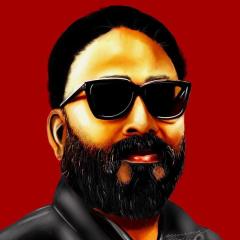-
Tell a friend
-
Topics
-
Posts
-
By ஈழப்பிரியன் · Posted
புலிகள் மட்டுமல்ல எந்த ஒரு தமிழ்கட்சியும் ஆதரிக்கவில்லை.சம்பந்தர் தொடவே மாட்டேன் என்றார். வரதராஜப்பெருமாள் ஏற்றுக்கொண்டு முதலமைச்சராக இருந்து அவரும் இது சரிவராது என்று ஓடிவிட்டார். -
8௦ களுக்கு பிறகு வந்தவங்கள் கனடா குளிரை லண்டன் குளிரை பார்த்து பயந்து மறுபடியும் அந்த தீவை நோக்கி ஓடுன்றான்கள். அங்கு ச்சினியும் விசமாகது இயற்கை உரங்களும் பொய் பெயரில் குலவை அடிக்குது .
-
இது எனக்கு ஒரு உளவியல் பிரச்சனையாக தெரிகிறது . நல்ல மன நல மருத்துவர் இதை சரி செய்து இருப்பார் . இனி புலம்பெயர் கூட்டம் இவற்றை விரும்பியோ விரும்பாமலோ ஏற்கத்தான் வேணும் 8௦ களுக்கு பிறகு பிறந்த வடகிழக்கு கூட்டம் குறைவு . திடீர் என பூமியில் இருந்து பிடுங்கப்பட்ட மக்கள் கூட்டம் போல் புலம்பெயர் வாழ்க்கை அமைய போவுது அதற்கு நாங்க மனதளவில் தயாராகணும் , இன்று அவர்களுக்கு நடப்பது தான் நாளை உங்களுக்கும் .
-
By தமிழ் சிறி · Posted
அதுகும்… வளர்ப்பு மகளை திருமணம் செய்யும் துணிவு, பிரான்ஸ் ஜனாதிபதி மக்ரோனுக்கும், அமெரிக்க முன்னாள் ஜனாதிபதி ட்ரம்புக்கும் வருமா…. தந்தை பெரியாருக்கு வந்ததே… கெத்து சார். 😂 -
புலர் ஊடாகவும் முதியோர் பராமரிப்பு இருக்கிறது என்று படித்ததாக நினைவு..சாப்பாடு , சவர்க்காரம் என்று கணக்கு பார்த்துக் கொண்டு இருந்தால் சரியாகுமா..கோவிக்க கூடாது..மனதில் பட்டதை அப்படியே கேட்கிறேன். ஏன் இப்படியான ஆதரவற்றவர்களையும் பார்க்க இயலாது..கருணைக் கொலைக்கு மனுப் பண்ணும் அளவுக்கு அறிவு இருக்கும் ஒருவர் ஏன் வாழ்வதற்கு வழி தேடக் கூடாது..
-
-
Our picks
-
"சோதிடமும் அசட்டுநம்பிக்கையும்"
kandiah Thillaivinayagalingam posted a topic in மெய்யெனப் படுவது,
"சோதிடமும் அசட்டுநம்பிக்கையும்"
தமிழர்களுக்கு நான்கு என்ற எண்ணை நிறையவே பிடிக்கும். இதைப் பார்க்கையில் சங்க காலத்திலேயே எண் சோதிடம்- (Numerology) "பித்து" வந்துவிட்டதோ என்று தோன்றுகிறது. ஆனால் சங்க காலத்துக்குப் பின்னர் தான் நூல்களையும் பாக்களையும் தொகுக்கும் வேலைகள் துவங்கின. என்ன காரணமோ தெரியவில்லை நூல்களின் பெயர்களில் 4, 40, 400, 4000 என்று நுழைத்து விட்டார்கள். நான் மணிக் கடிகை முதல் நாலாயிர திவ்யப் பிரபந்தம் வரை சர்வமும் நாலு மயம்தான் !!
“ஆலும் வேலும் பல்லுக்குறுதி, நாலும் இரண்டும் சொல்லுக் குறுதி” என்று சொல்லுவார்கள். ஆல, வேல மரங்களை விளக்கத் தேவை இல்லை. “நாலும் இரண்டும்” என்பது வெண்பாவையும் குறள் வகைப் பாக்களையும் குறிக்கும். நம்பிக்கை தவறில்லை அது மூடநம்பிக்கை யாகமல் இருக்கும் வரை. அளவுக்கு அதிகமாக இதுபோல சிந்திக்கும் போது நம்பிக்கையே மூடநம்பிக்கைக்கு வழிவகுப்பதாக அமைகிறது!.
-
-
- 1 reply
Picked By
மோகன், -
-
வேதத்தில் சாதி இருக்கிறதா?
narathar posted a topic in மெய்யெனப் படுவது,
இதை எழுத மிகவும் அயற்சியாய்த் தான் இருக்கிறது.
ஜீவா போன்றவர்களுக்கு இந்து மதத்தை காப்பாற்ற வேண்டிய தேவை என்ன என்பதை நான் கேட்கவில்லை ஆனால் சமுத்ரா போன்றவர்களுடைய தேவையில் இருந்து மாறுபட்டதாக அது இருக்கும் என்று புரிந்துகொள்கிறேன். அது என்னுடைய புரிதல். எல்லோரும் எதோ ஒரு புரிதலின் அடிப்படையிலேயே அடுத்த அடியை எடுத்து வைக்கிறோம்.-
-
- 1 reply
Picked By
மோகன், -
-
மனவலி யாத்திரை.....!
shanthy posted a topic in கதை கதையாம்,
மனவலி யாத்திரை.....!
(19.03.03 இக்கதை எழுதப்பட்டது.2001 பொங்கலின் மறுநாள் நிகழ்ந்த ஒரு சம்பவத்தின் நினைவாக பதிவிடப்பட்டது இன்று 7வருடங்கள் கழித்து பதிவிடுகிறேன்)
அந்த 2001 பொங்கலின் மறுநாள் அவனது குரல்வழி வந்த அந்தச் செய்தி. என் உயிர் நாடிகளை இப்போதும் வலிக்கச் செய்கிறது. அது அவனுக்கும் அவனது அவர்களுக்கும் புதிதில்லைத்தான். அது அவர்களின் இலட்சியத்துக்கு இன்னும் வலுச்சேர்க்கும். ஆனால் என்னால் அழாமல் , அதைப்பற்றி எண்ணாமல் , இனிவரும் வருடங்களில் எந்தப் பொங்கலையும் கொண்டாட முடியாதபடி எனக்குள் அவனது குரலும் அவன் தந்த செய்திகளும் ஒலித்துக் கொண்டேயிருக்கும்.-
- 1 reply
Picked By
மோகன், -
-
பாலியல் சுதந்திரமின்றி பெண்விடுதலை சாத்தியமில்லை
mooki posted a topic in சமூகச் சாளரம்,
பாலியல் சுதந்திரமின்றி பெண்விடுதலை சாத்தியமில்லை - செல்வன்
Friday, 16 February 2007
காதலர் தினத்தை வழக்கமான தமது அரசியல் நிலைபாடுகளை பொறுத்து அணுகும் செயலை பல்வேறு தரப்பினரும் உற்சாகமாக செய்து வருகின்றனர்.கிரீட்டிங் கார்டுகளையும், சாக்லடுகளையும் விற்க அமெரிக்க கம்பனிகள் சதி செய்வதாக கூறி காம்ரேடுகள் இதை எதிர்த்து வருகின்றனர்.அமெரிக்க கலாச்சாரத்தை திணிக்க முயற்சி நடப்பதாக கூறி சிவசேனாவினரும் இதை முழுமூச்சில் எதிர்க்கின்றனர். தமிழ்நாட்டில் பாமக ராமதாஸ் இதை கண்டித்து அறிக்கை விட்டுள்ளார். பாகிஸ்தானிலும், அரபுநாடுகளிலும் இதை எதிர்த்து பத்வாக்கள் பிறப்பிக்கப்பட்டு அதை மீறி இளைஞர்கள் இதை கொண்டாடியதாக செய்திகள் வந்துள்ளன.-
- 20 replies
Picked By
மோகன், -
-
ஒரு சித்தர் பாடல்
பண்டிதர் posted a topic in மெய்யெனப் படுவது,
எனக்குப் பிடித்த ஒரு சித்தர் பாடல் (எந்தச் சித்தர் என்று மறந்து விட்டேன். கட்டாயம் தேவை என்றால் சொல்லுங்கள் எனது ஓலைச் சுவடிகளை புரட்டிப்பார்த்து பின்னர் அறியத் தருகிறேன்)
நட்ட கல்லைத் தெய்வம் என்று நாலுபுட்பம் சாத்தியே
சுற்றி வந்து முணுமுணென்று கூறுமந்த்ரம் ஏனடா
நட்ட கல்லும் பேசுமோ நாதன் உள்ளிருக்கையில்
சுட்ட சட்டி தட்டுவம் கறிச்சுவை அறியுமோ?
பொருள்:
சூளையில் வைத்துச் சுட்டுச் செய்த மண் பாத்திரத்தில் வைக்கும் கறியின் சுவை எப்படியானது என்று அந்தப் பாத்திரத்துக்கு விளங்குமா? அது போல, எம்முள்ளே எருக்கும் இறைவனை நீ அறியாமல் ஒரு கல்லினுள் கடவுள் இருப்பதாக நம்பி வெறும் கல்லை அராதித்து வழிபடுகிறாய்.-
- 7 replies
Picked By
மோகன், -
-










Recommended Posts